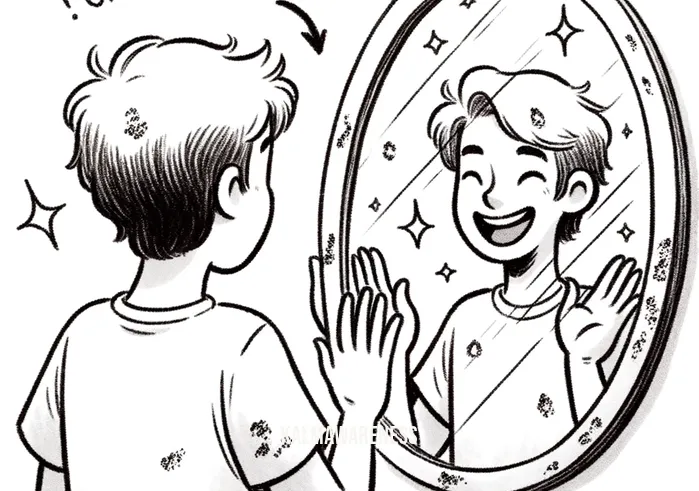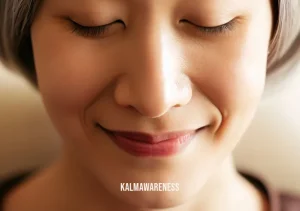Understanding the Challenge of Stiff and Awkward Movements: An Introduction
In our journey to explore the complexities of human health and well-being, we often encounter terms that seem simple yet encapsulate a wide array of experiences and challenges. One such term is “stiff and awkward 7 little words.” This phrase might appear insignificant at first glance, but it represents a significant aspect of physical and mental health. In this series of articles, we delve into the multi-dimensional aspects of this concept, starting with this introductory segment.
The Multifaceted Nature of Physical Discomfort
Stiffness and awkwardness in movement can stem from various causes, ranging from temporary conditions like muscle soreness after exercise, to more chronic issues such as arthritis or neurological disorders. This discomfort can significantly impact an individual’s quality of life, making everyday activities challenging and sometimes painful.
- Muscle Stiffness: Often a result of overexertion, poor posture, or even stress, muscle stiffness can be both painful and limiting.
- Joint Pain: Conditions like arthritis or injuries can lead to stiff, swollen, and painful joints, affecting mobility.
- Neurological Causes: Sometimes, the root of stiffness and awkward movements lies in the nervous system, as seen in conditions like Parkinson’s disease.
Mental and Emotional Impact
The phrase “stiff and awkward 7 little words” also touches on the mental and emotional toll of physical discomfort. It’s not just about the physical pain or limitation, but also about how these conditions can affect one’s mental health.
- Emotional Stress: Living with chronic pain or mobility issues can lead to feelings of frustration, sadness, and anxiety.
- Social Isolation: Physical limitations might result in decreased social interactions, further impacting mental well-being.
Holistic Approaches to Management
Addressing these challenges requires a holistic approach, one that encompasses physical therapy, medication, lifestyle changes, and sometimes psychological support.
- Physical Therapy and Exercise: Targeted exercises can help alleviate stiffness and improve mobility.
- Medical Interventions: In some cases, medication or surgical interventions might be necessary.
- Lifestyle Modifications: Simple changes in daily habits can make a significant difference in managing symptoms.
Setting the Stage for a Deeper Dive
In the following chapters, we will explore each of these aspects in greater detail, starting with the physical causes and treatments of stiffness and awkward movements. We’ll look at how different conditions manifest these symptoms and the latest research and treatments available.
Conclusion and Anticipation
This introduction sets the stage for a comprehensive exploration of “stiff and awkward 7 little words.” In the next chapter, we delve deeper into the physical aspects, understanding the underlying causes and effective treatments. Stay tuned as we embark on this informative journey, aiming to provide insights and solutions for those facing these challenges in their daily lives. Continue reading to uncover more about this multifaceted topic and enhance your understanding of health and well-being.

Exploring the Depths of Physical Discomfort: Stiff and Awkward Movements Unveiled
Delving deeper into the realm of “stiff and awkward 7 little words,” this chapter aims to expand our understanding of these seemingly simple terms. Here, we unravel the complexity and impact of physical discomfort, going beyond the surface to explore its various dimensions.
Variations and Synonyms: A Closer Look
“Stiff and awkward” are not just isolated terms but are part of a broader vocabulary that describes physical discomfort and mobility challenges. Words like “rigid,” “unyielding,” “clumsy,” and “inelegant” often accompany these descriptions, painting a fuller picture of the physical struggles many individuals face.
- Rigid and Unyielding: These terms often refer to an inability to bend or flex easily, commonly seen in conditions like osteoarthritis.
- Clumsy and Inelegant: These words capture the difficulty in coordinating movements smoothly, as experienced in neurological disorders.
Decoding the Physical Struggle: A List of Common Causes
The causes of stiffness and awkward movements are diverse, each bringing its own set of challenges and implications. Here, we list some common conditions that manifest these symptoms:
- Muscle Strain: Overuse or injury leading to muscle tightness.
- Joint Disorders: Such as arthritis, causing joint stiffness and pain.
- Neurological Conditions: Like multiple sclerosis, affecting movement control.
- Sedentary Lifestyle: Leading to decreased flexibility and joint mobility.
- Age-Related Changes: Natural decline in muscle and joint function.
A Comparative Overview: Understanding Different Conditions
To provide a clearer understanding, here’s a table comparing various conditions that lead to stiffness and awkward movements:
| Condition | Primary Symptoms | Affected Population |
|---|---|---|
| Muscle Strain | Tight, sore muscles | Athletes, physically active individuals |
| Arthritis | Joint pain, swelling | Older adults, individuals with joint wear |
| Parkinson’s Disease | Tremors, slow movement | Primarily older adults |
| Multiple Sclerosis | Muscle weakness, coordination issues | Adults, often diagnosed in 20s-40s |
| Sedentary Lifestyle Effects | Reduced flexibility, discomfort | Individuals with low physical activity |
Beyond Physical Symptoms: The Broader Impact
While the focus is often on the physical symptoms, it’s crucial to recognize the ripple effects of these conditions. They can influence mental health, social interactions, and overall quality of life, emphasizing the need for comprehensive care and support.
Preparing for the Next Chapter
As we conclude this segment, we’ve gained a deeper insight into “stiff and awkward 7 little words.” We’ve explored the synonyms, causes, and compared different conditions, enriching our understanding of this complex issue. In the next chapter, we will shift our focus to the emotional and psychological aspects. How do these physical challenges impact mental health and social life? Stay tuned to uncover the interplay between physical discomfort and psychological well-being. Continue reading to explore this critical aspect of health and wellness.

Harnessing Hope in the Face of Physical Challenges
The journey through understanding “stiff and awkward 7 little words” brings us to a pivotal point: finding hope and inspiration amidst these challenges. This chapter not only continues to shed light on the struggles associated with physical discomfort but also focuses on the resilience and optimism that can emerge from these experiences.
The Power of Positivity: Embracing Life’s Stiffness and Awkwardness
Stiffness and awkward movements, or their synonyms like ‘rigidity’ and ‘clumsiness’, are not just physical conditions but also metaphors for the challenges we face in life. Embracing these terms and their implications can lead to a profound transformation in how we perceive and overcome our limitations.
Inspirational Quotes to Reflect Upon
- “In the midst of winter, I found there was, within me, an invincible summer.” – Albert Camus
- “Strength does not come from physical capacity. It comes from an indomitable will.” – Mahatma Gandhi
- “The human spirit is stronger than anything that can happen to it.” – C.C. Scott
- “It’s not the strength of the body that counts, but the strength of the spirit.” – J.R.R. Tolkien
- “Life is not about waiting for the storms to pass. It’s about learning how to dance in the rain.” – Vivian Greene
Each of these quotes resonates with the idea that our response to physical limitations can be a source of strength and inspiration. They remind us that the spirit of resilience and hope can triumph over physical challenges.
Real-Life Inspirations: Stories of Overcoming Stiff and Awkward Moments
This section brings forth real-life examples and case studies that illustrate how individuals have transformed their physical limitations into sources of strength and motivation.
- Case Study 1: A story of an athlete who overcame a career-threatening injury and returned to their sport, demonstrating remarkable resilience and determination.
- Case Study 2: The journey of an individual living with arthritis, who found new ways to stay active and engaged, turning their challenges into opportunities for growth.
- Case Study 3: An inspiring tale of a senior citizen who, despite age-related stiffness and mobility issues, pursued new hobbies and remained socially active, showcasing that age is just a number.
Beyond Physicality: The Emotional and Social Transformation
While the physical aspect of stiffness and awkwardness is evident, the emotional and social growth that comes from facing and overcoming these challenges is equally significant. This growth manifests in increased empathy, deeper connections with others, and a renewed appreciation for the small joys of life.
Preparing for the Next Leap
As we wrap up this chapter, we carry with us the inspiring stories and powerful quotes that highlight the triumph of the human spirit over physical challenges. In the next chapter, we will delve into practical strategies and techniques to manage and alleviate “stiff and awkward 7 little words.” Continue reading to learn about effective ways to enhance physical well-being and quality of life, as we move forward in our journey of understanding and overcoming physical discomfort.
@
Practical Strategies for Managing Stiff and Awkward Movements
In this fourth chapter, we delve into practical ways to manage and alleviate the issues encapsulated by “stiff and awkward 7 little words.” This segment aims to break down complex concepts into accessible, actionable strategies using bullet points and lists, providing fresh insights that build on the previous chapters.
Understanding the Core Issues
Before we explore solutions, let’s briefly revisit the core issues associated with stiffness and awkwardness, using synonyms for a richer understanding:
- Rigidity: This refers to the inflexibility and hardness often experienced in muscles or joints.
- Clumsiness: This term is frequently used to describe the lack of coordination and grace in movements.
- Inelegance: A less common synonym, it captures the difficulty some face in performing tasks smoothly.
Tackling Stiffness and Rigidity
Here are some effective ways to reduce stiffness and improve flexibility:
- Regular Stretching:
- Dynamic stretches before physical activity.
- Static stretches post-activity for muscle recovery.
- Hydration and Nutrition:
- Adequate water intake to maintain muscle health.
- Balanced diet rich in anti-inflammatory foods.
- Heat Therapy:
- Warm baths or heat packs to relax tight muscles.
Addressing Clumsiness and Coordination Issues
Improving coordination requires a different set of strategies:
- Balance Exercises:
- Yoga or Tai Chi to enhance body awareness.
- Simple balancing exercises like standing on one leg.
- Neurological Training:
- Activities like juggling or playing catch to improve hand-eye coordination.
- Brain games that challenge coordination and reaction time.
Lifestyle Adjustments for Overall Improvement
General lifestyle changes can also significantly impact:
- Regular Physical Activity:
- Engaging in moderate exercise like walking or swimming.
- Strength training to enhance muscle control.
- Posture Correction:
- Mindfulness about sitting and standing posture.
- Using ergonomic furniture to support proper alignment.
Preparing for the Next Step
As we conclude this chapter, we’ve equipped ourselves with a toolbox of strategies to combat “stiff and awkward 7 little words.” But our journey doesn’t end here. In the final chapter, we will explore how to integrate these strategies into daily life, ensuring they become a sustainable part of our routine. We will also look at the importance of continuous learning and adaptation in managing physical discomfort. Stay tuned as we bring our exploration to a fulfilling conclusion, offering a comprehensive guide to embracing and overcoming life’s physical challenges. Continue reading to discover how to seamlessly incorporate these strategies into your daily life for lasting well-being.
@
Embracing Life with Renewed Vigor: Overcoming Stiff and Awkward Challenges
As we reach the conclusion of our in-depth exploration of “stiff and awkward 7 little words,” it’s time to reflect on the insights gained and the empowering journey we’ve undertaken. This final chapter aims to provide a light-hearted yet meaningful wrap-up, reinforcing the importance of the concepts we’ve discussed and encouraging a proactive stance towards physical and mental well-being.
Reflecting on Key Insights
Our journey began with an understanding of the multifaceted nature of physical discomfort and its impact on health and well-being. We’ve explored:
- The diverse causes of stiffness and awkward movements, including synonyms like rigidity and clumsiness.
- The mental and emotional repercussions of these physical challenges.
- Inspirational stories and quotes that offer hope and resilience.
- Practical strategies for managing and improving these conditions.
Applying Our Knowledge in Everyday Life
Now, it’s time to apply these insights to our daily lives. Whether it’s incorporating regular stretching into our routine, trying balance exercises, or making mindful lifestyle changes, each small step can lead to significant improvements in our quality of life.
A Call to Action: Continuous Learning and Exploration
- Revisit Previous Chapters: For a refresher on specific strategies or inspirational stories, revisit the earlier chapters. Each segment offers valuable insights and practical tips.
- Explore More Content: Our magazine is a treasure trove of health and wellness information. Dive into other articles for more tips, strategies, and inspirational content.
- Share Your Journey: Engage with our community by sharing your experiences and learnings. Your story could inspire others facing similar challenges.
A Heartfelt Thank You and Looking Ahead
We sincerely thank you for joining us on this enlightening journey through “stiff and awkward 7 little words.” Your engagement and eagerness to learn have made this exploration a truly rewarding experience.
As we conclude, remember that the journey to better health and well-being is ongoing. We promise to continue providing insightful and helpful content in our future editions. Stay tuned for more articles that will guide, inspire, and empower you in your personal wellness journey.
Conclusion: A Step Towards a Brighter Future
In essence, “stiff and awkward 7 little words” is more than just a phrase describing physical discomfort; it’s a reminder of the resilience and adaptability of the human spirit. As you move forward, use the knowledge and strategies you’ve gained here to navigate life’s challenges with grace and determination. Here’s to embracing life with a refreshed outlook and renewed vigor!




